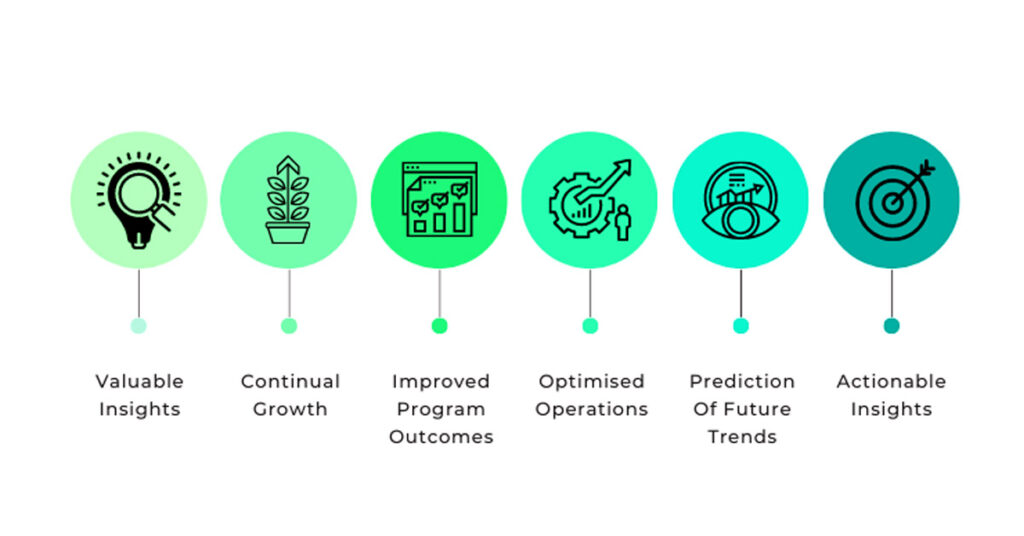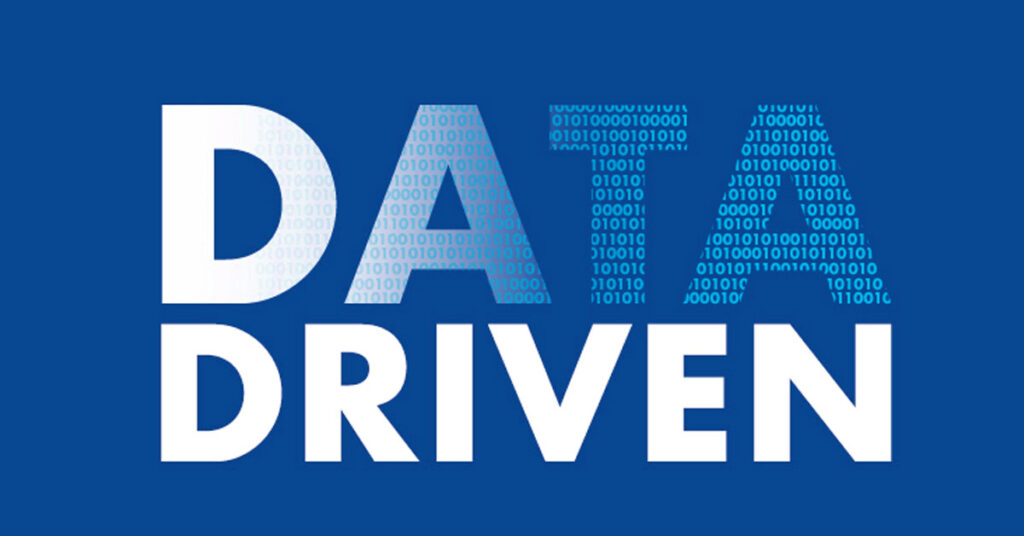Struggling to make choices that fuel growth? Data holds the key. Discover how data-driven decisions can give your organization a competitive advantage, streamline operations, and delight your customers. This guide dives deep into the power of data driven decision making, its benefits, and how to implement it for success.
Understanding Data Driven Decision Making
Data driven decision making entails using relevant data and analytics to guide business strategies, rather than relying solely on intuition or experience. By harnessing the power of data, organizations can make informed choices that lead to improved outcomes and better performance across various functions, from marketing and sales to operations and customer service.
Embracing a Data-Centric Culture
In today’s digital age, businesses must foster a culture that values data-driven insights. From leadership down to frontline employees, everyone should be encouraged to collect, analyze, and act upon data effectively. Cultivating this data-centric mindset ensures that decisions are grounded in evidence rather than guesswork.
The Role of Technology in Data Analysis
Advancements in technology have made it easier than ever to collect, process, and analyze vast amounts of data. From sophisticated analytics platforms to AI-driven tools, organizations have a plethora of resources at their disposal to extract actionable insights from data sources. Investing in the right technology infrastructure is crucial for enabling effective data driven decision making.
Benefits of Data Driven Decision Making

The adoption of data driven decision making offers numerous benefits that directly contribute to business success and growth.
Enhanced Strategic Planning
By leveraging data insights, organizations can develop more robust strategic plans that are aligned with market trends, consumer preferences, and competitive dynamics. This proactive approach enables businesses to anticipate challenges, identify opportunities, and stay ahead of the curve.
Improved Operational Efficiency
Data driven decision making helps streamline operations by identifying inefficiencies, optimizing workflows, and allocating resources more effectively. By eliminating bottlenecks and optimizing processes, organizations can reduce costs, enhance productivity, and deliver greater value to customers.
Personalized Customer Experiences
Understanding customer behavior and preferences is essential for delivering personalized experiences that drive loyalty and satisfaction. Data-driven insights enable businesses to segment their audience, tailor offerings to individual needs, and anticipate customer needs effectively.
Data-Driven Innovation
Data driven decision making fosters a culture of innovation by encouraging experimentation and iteration based on empirical evidence. By analyzing data trends and patterns, organizations can identify new opportunities for product development, service enhancements, and market expansion.
Implementing Data Driven Decision Making
While the benefits of data driven decision making are clear, implementing it successfully requires a strategic approach and careful consideration of key factors.
Define Clear Objectives
Before diving into data analysis, it’s essential to define clear objectives and key performance indicators (KPIs) that align with your business goals. Whether it’s increasing revenue, improving customer satisfaction, or optimizing operational efficiency, having a clear roadmap ensures that data insights are actionable and impactful.
Invest in Data Quality
The quality of your data is paramount to the success of data driven decision making. Invest in robust data collection methods, ensure data accuracy and consistency, and implement measures to address data privacy and security concerns. Clean, reliable data forms the foundation upon which informed decisions can be made.
Empower Data Literacy
Building a team with strong data literacy skills is essential for maximizing the value of data driven insights. Provide training and resources to enhance employees’ data literacy, encourage cross-functional collaboration, and foster a culture of continuous learning and improvement.
Iterative Approach
Data driven decision making is not a one-time endeavor but a continuous process of learning and refinement. Embrace an iterative approach to data analysis, experiment with different strategies, measure outcomes, and adapt based on feedback and insights gained along the way.
Driven Decision Making Real Life Examples
Data Driven Decision Making in Healthcare

Data-driven decision-making in healthcare refers to the practice of using data analysis and insights to inform and guide decision-making processes within the healthcare industry. This approach leverages various sources of data, including patient records, clinical trials, medical imaging, and health outcomes, to drive informed choices that can improve patient care, optimize resource allocation, and enhance operational efficiency.
Key aspects of data-driven decision-making in healthcare include
Evidence-Based Medicine: Healthcare professionals utilize data from clinical studies, patient records, and medical research to inform treatment decisions. By analyzing large datasets, clinicians can identify trends and patterns that help determine the most effective treatments for specific conditions.
Predictive Analytics: Healthcare organizations employ predictive analytics to forecast patient outcomes, identify at-risk populations, and anticipate healthcare needs. By analyzing historical data, predictive models can help healthcare providers intervene earlier and prevent adverse health events.
Population Health Management: Data analytics enables healthcare providers to manage the health of entire populations by identifying health trends, assessing risk factors, and implementing targeted interventions. This proactive approach aims to improve health outcomes and reduce healthcare costs by focusing on preventive care and chronic disease management.
Operational Efficiency: Data-driven insights can optimize healthcare operations by streamlining workflows, reducing wait times, and allocating resources more effectively. By analyzing operational data, healthcare administrators can identify areas for improvement and implement changes to enhance efficiency and quality of care.
Healthcare Policy and Planning: Policymakers and public health officials rely on data analysis to develop evidence-based healthcare policies, allocate funding, and plan for future healthcare needs. Data-driven decision-making helps ensure that healthcare resources are allocated efficiently and equitably to address the most pressing health challenges.
Quality Improvement Initiatives: Healthcare organizations use data analytics to monitor and improve the quality of care delivered to patients. By tracking key performance indicators and benchmarking against industry standards, healthcare providers can identify areas for improvement and implement quality improvement initiatives to enhance patient outcomes and satisfaction.
Data Driven Decision Making For Strategic Planning And Budgeting

Data-driven decision-making for strategic planning and budgeting involves using data analysis and insights to inform long-term organizational goals, priorities, and resource allocation strategies. This approach integrates quantitative and qualitative data to guide strategic decision-making processes and optimize the allocation of financial resources.
Key aspects of data-driven decision-making for strategic planning and budgeting include
Data Analysis: Organizations gather and analyze various types of data, including financial data, market trends, customer insights, and internal performance metrics. By analyzing this data, decision-makers can identify patterns, trends, and opportunities that inform strategic priorities and budgetary decisions.
Forecasting and Prediction: Data analytics tools enable organizations to forecast future trends and outcomes based on historical data and market dynamics. This helps decision-makers anticipate changes in the business environment and adjust strategic plans and budgets accordingly.
Scenario Planning: Organizations use data-driven scenario planning to model different potential outcomes and assess the impact of various strategic decisions on future performance. By simulating different scenarios, decision-makers can evaluate the risks and opportunities associated with different courses of action and make informed decisions to achieve strategic objectives.
Resource Optimization: Data analysis helps organizations identify areas of inefficiency and opportunities for cost optimization. By analyzing operational data and performance metrics, decision-makers can identify opportunities to streamline processes, reduce waste, and allocate resources more effectively to support strategic priorities.
Performance Measurement and Monitoring: Organizations establish key performance indicators (KPIs) and metrics to track progress towards strategic goals and objectives. Data-driven dashboards and reporting systems provide real-time visibility into organizational performance, enabling decision-makers to monitor progress, identify areas for improvement, and make data-driven adjustments to strategic plans and budgets.
Risk Management: Data analytics helps organizations identify and mitigate risks associated with strategic decisions and budget allocations. By analyzing historical data and market trends, decision-makers can assess the likelihood and potential impact of various risks and develop strategies to mitigate them effectively.
Alignment with Organizational Goals: Data-driven decision-making ensures that strategic plans and budget allocations are aligned with organizational goals, priorities, and values. By basing decisions on objective data and evidence, organizations can ensure that resources are allocated to initiatives that support the overall mission and vision of the organization.
How To Improve Your Problem Solving Skills in Data Driven Decision Making

Improving problem-solving skills in data-driven decision-making requires a combination of technical proficiency, critical thinking, and practical experience. Here are some strategies to enhance your problem-solving skills in this domain:
Develop Data Literacy: Acquire a strong foundation in data analysis techniques, statistical methods, and data visualization tools. Invest time in learning programming languages such as Python, R, or SQL, as well as data manipulation and visualization libraries like pandas, matplotlib, and ggplot2.
Understand Data Sources: Familiarize yourself with the various sources of data relevant to your field, including structured databases, unstructured data sources, and external data repositories. Understand the strengths, limitations, and biases associated with different data sources to make informed decisions during analysis.
Practice Data Cleaning and Preparation: Data is often messy and incomplete, requiring thorough cleaning and preprocessing before analysis. Practice techniques for data cleaning, handling missing values, and transforming data into a usable format. This ensures that your analysis is based on high-quality, reliable data.
Master Analytical Techniques: Deepen your understanding of statistical analysis methods, machine learning algorithms, and predictive modeling techniques. Experiment with different analytical approaches and models to understand their strengths, weaknesses, and applicability to different types of problems.
Emphasize Critical Thinking: Cultivate critical thinking skills to evaluate data, identify patterns, and draw meaningful insights. Question assumptions, challenge conventional wisdom, and consider alternative explanations when analyzing data and making decisions.
Develop Problem-Solving Frameworks: Adopt structured problem-solving frameworks such as the scientific method, Six Sigma DMAIC (Define, Measure, Analyze, Improve, Control), or CRISP-DM (Cross-Industry Standard Process for Data Mining) to guide your analytical process. These frameworks provide a systematic approach to problem-solving and decision-making, ensuring that you consider all relevant factors and make evidence-based decisions.
Collaborate with Others: Seek opportunities to collaborate with colleagues, mentors, and domain experts to gain new perspectives and insights. Discussing problems and sharing ideas with others can help you identify blind spots, generate creative solutions, and learn from different approaches to problem-solving.
Continuous Learning and Improvement: Stay curious and committed to continuous learning in the field of data-driven decision-making. Keep abreast of emerging trends, new technologies, and best practices through online courses, workshops, conferences, and professional networking opportunities.
Apply Problem-Solving Skills in Real-world Projects: Practice problem-solving skills by working on real-world projects and case studies. Apply your analytical skills to solve practical problems, analyze real data, and make data-driven recommendations that have tangible impact and value.
Reflect and Iterate: Reflect on your problem-solving process, evaluate the effectiveness of your approaches, and learn from both successes and failures. Iterate on your problem-solving methods, refine your techniques, and adapt to new challenges and opportunities as you continue to grow and develop your skills in data-driven decision-making.
Data Driven Decision Making FAQs
How can small businesses benefit from data driven decision making?
Small businesses can benefit from data driven decision making by gaining valuable insights into customer preferences, identifying growth opportunities, and optimizing operations for efficiency and cost-effectiveness.
What role does artificial intelligence play in data driven decision making?
Artificial intelligence plays a significant role in data driven decision making by enabling advanced analytics, predictive modeling, and automation of repetitive tasks. AI algorithms can uncover complex patterns in data and provide actionable insights for decision-makers.
Are there any risks associated with data driven decision making?
While data driven decision making offers numerous benefits, it also comes with risks such as data privacy concerns, security breaches, and reliance on inaccurate or biased data. Organizations must implement robust data governance frameworks and ethical guidelines to mitigate these risks effectively.
How can businesses measure the effectiveness of their data-driven strategies?
Businesses can measure the effectiveness of their data-driven strategies by tracking key performance indicators (KPIs) aligned with their objectives. Whether it’s revenue growth, customer retention, or operational efficiency, establishing measurable metrics allows organizations to evaluate the impact of their decisions accurately.
What are some common challenges faced in implementing data driven decision making?
Some common challenges in implementing data driven decision making include data silos, legacy systems, lack of skilled talent, and resistance to change. Overcoming these challenges requires strong leadership, investment in technology and training, and a willingness to embrace a data-driven culture.
How can businesses ensure data security and compliance while leveraging data-driven insights?
Businesses can ensure data security and compliance by implementing robust data encryption measures, access controls, and regular audits to monitor data usage. Additionally, adhering to relevant regulatory requirements such as GDPR or CCPA helps mitigate legal risks associated with data handlings.



